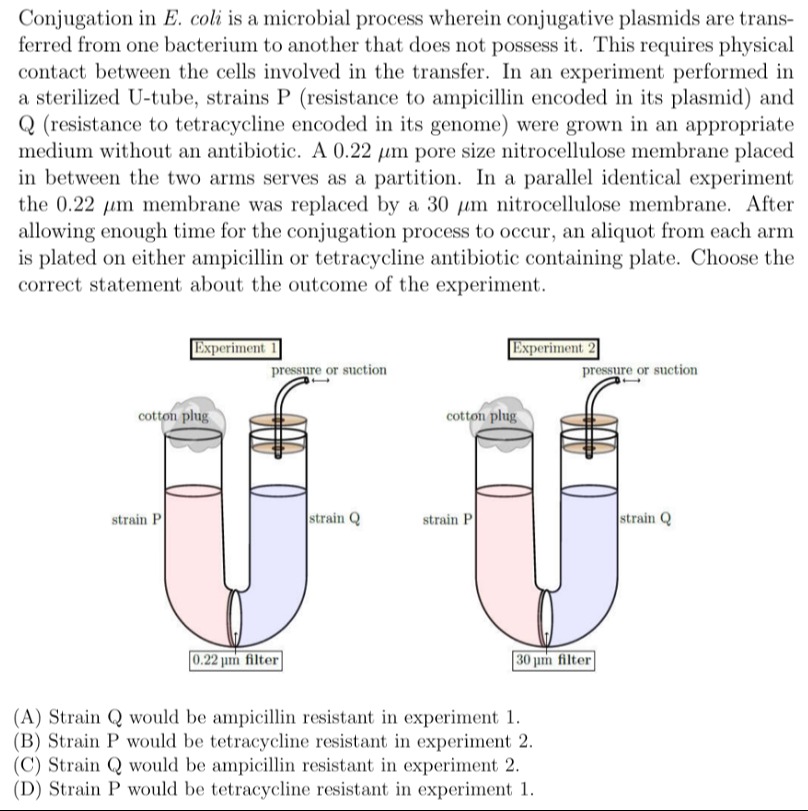Question
Question: Conjugation in *E. coli* is a microbial process wherein conjugative plasmids are transferred from on...
Conjugation in E. coli is a microbial process wherein conjugative plasmids are transferred from one bacterium to another that does not possess it. This requires physical contact between the cells involved in the transfer. In an experiment performed in a sterilized U-tube, strains P (resistance to ampicillin encoded in its plasmid) and Q (resistance to tetracycline encoded in its genome) were grown in an appropriate medium without an antibiotic. A 0.22 µm pore size nitrocellulose membrane placed in between the two arms serves as a partition. In a parallel identical experiment the 0.22 µm membrane was replaced by a 30 µm nitrocellulose membrane. After allowing enough time for the conjugation process to occur, an aliquot from each arm is plated on either ampicillin or tetracycline antibiotic containing plate. Choose the correct statement about the outcome of the experiment.

Strain Q would be ampicillin resistant in experiment 1.
Strain P would be tetracycline resistant in experiment 2.
Strain Q would be ampicillin resistant in experiment 2.
Strain P would be tetracycline resistant in experiment 1.
Strain Q would be ampicillin resistant in experiment 2.
Solution
Conjugation requires direct cell-to-cell contact.
-
In Experiment 1, the 0.22 µm filter prevents bacteria (which are larger than 0.22 µm) from passing through, thus preventing physical contact and conjugation. No resistance transfer occurs.
-
In Experiment 2, the 30 µm filter allows bacteria to pass through and mix, enabling physical contact and conjugation. Strain P, carrying the ampicillin resistance plasmid, will transfer this plasmid to Strain Q. Consequently, Strain Q will become ampicillin resistant. Strain Q's tetracycline resistance is genomic and not transferred via plasmid conjugation.
